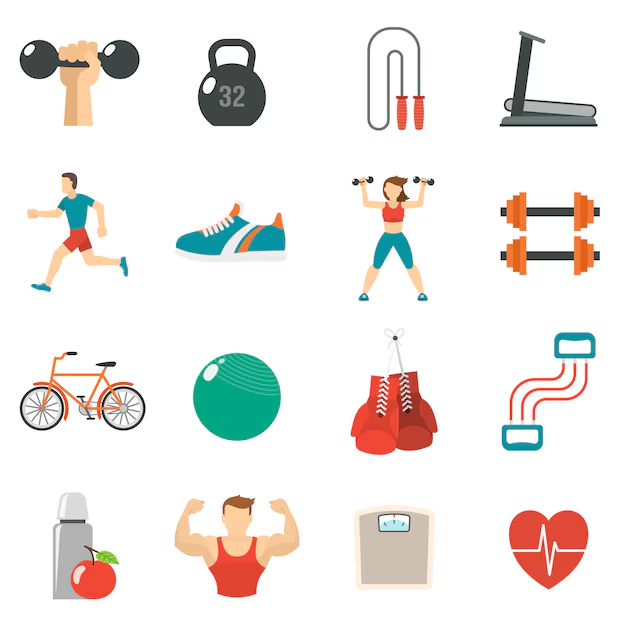15 Self-Care Practices for Women's Mental Strength

Updated at: 2025-05-14 14:22:01 (4 months ago by Melkisedeck Leon Shine)
Prioritizing Mental Wellness: A Holistic Self-Care Framework for Women
Contemporary societal pressures necessitate a proactive approach to mental well-being, particularly for women who often shoulder disproportionate caregiving responsibilities. Self-care, far from being self-indulgent, is a fundamental pillar of holistic health, enabling individuals to maintain equilibrium and prevent burnout. This framework presents fifteen evidence-based strategies, grounded in psychological and physiological principles, to cultivate robust mental wellness. The efficacy of these approaches is rooted in the concept of resource-based models, which posit that replenishing personal resources (e.g., energy, emotional resilience) is vital for optimal functioning.
Fifteen Pillars of Mental Wellness: A Self-Care Framework
- Cultivating Mindfulness and Present Moment Awareness: Mindfulness practices, such as meditation and yoga, promote a focused attention on the present experience, reducing rumination and enhancing emotional regulation. This aligns with the tenets of Acceptance and Commitment Therapy (ACT), emphasizing present-moment acceptance and mindful action. Utilizing guided meditation apps can facilitate the development of this crucial skill. Regular practice enhances cognitive flexibility, a key component of emotional resilience. For instance, a woman experiencing high levels of work stress might utilize mindfulness techniques to center herself during challenging moments, fostering better coping mechanisms.
- Optimizing Sleep Hygiene for Cognitive Restoration: Adequate sleep is essential for cognitive restoration and emotional regulation. Establishing a consistent sleep schedule, creating a conducive sleep environment (dark, quiet, cool), and engaging in relaxation techniques like progressive muscle relaxation before bedtime are crucial. Sleep deprivation negatively impacts the hypothalamic-pituitary-adrenal (HPA) axis, increasing susceptibility to stress. A woman struggling with insomnia might benefit from implementing a comprehensive sleep hygiene plan, encompassing cognitive behavioral therapy for insomnia (CBT-I) techniques to address underlying thought patterns and behaviors that interfere with sleep.
- Establishing Assertive Boundaries for Resource Preservation: Setting boundaries, both personal and professional, is a critical self-care strategy. Assertiveness training empowers women to communicate their needs and limits effectively, preventing feelings of overwhelm and burnout. This aligns with the concept of self-compassion and the preservation of personal resources. For example, a working mother might assertively delegate tasks at home or at work to manage her workload and avoid exceeding her capacity.
- Engaging in Meaningful Activities for Enhanced Well-being: Participating in activities that spark joy and promote self-expression is crucial for fostering positive emotions and a sense of purpose. Self-Determination Theory (SDT) highlights the importance of autonomy, competence, and relatedness in motivating behavior and well-being. Pursuing hobbies fosters a sense of accomplishment and boosts self-esteem. A woman might rediscover her passion for painting or join a hiking group to enhance her sense of connection and well-being.
- Nurturing Social Connections for Enhanced Resilience: Strong social support networks are vital buffers against stress and promote resilience. Social support theory emphasizes the protective effects of positive relationships on mental health. Regular interaction with loved ones enhances emotional well-being and fosters a sense of belonging. For example, a woman might schedule regular phone calls with friends or family members to maintain strong relationships and enhance her emotional support system.
- Cultivating Self-Compassion to Counter Negative Self-Talk: Self-compassion involves treating oneself with kindness and understanding, particularly during times of difficulty. This involves acknowledging imperfections and practicing self-forgiveness, counteracting negative self-talk. Self-compassionate individuals tend to exhibit greater resilience and coping abilities. A woman might challenge negative self-criticism by focusing on her strengths and accomplishments, treating herself with the same empathy she would offer a close friend.
- Integrating Physical Activity for Holistic Well-being: Regular exercise exerts profound positive effects on both physical and mental health. Physical activity promotes the release of endorphins, enhancing mood and reducing stress. Exercise also improves sleep quality and reduces symptoms of anxiety and depression. A woman could incorporate a daily walk, yoga sessions, or swimming to enhance her physical and mental well-being.
- Managing Technology Consumption for Improved Well-being: Excessive screen time can negatively impact mental health, increasing stress and anxiety. Establishing technology-free periods throughout the day promotes relaxation and enhances focus. This digital detox strategy allows for reconnection with oneself and loved ones, promoting a more balanced lifestyle. A woman might implement a "no phone after 8 pm" rule to ensure a restful night’s sleep.
- Practicing Gratitude for Enhanced Positive Affect: A gratitude practice involves focusing on the positive aspects of one's life, cultivating a more positive outlook. Positive psychology research indicates that gratitude is associated with increased happiness, life satisfaction, and resilience. A woman might keep a gratitude journal to record positive experiences and foster a more appreciative mindset.
- Seeking Professional Support When Necessary: Seeking professional help from a therapist or counselor is a sign of strength, not weakness. Mental health professionals provide evidence-based strategies and support to address specific challenges and build coping mechanisms. Cognitive Behavioral Therapy (CBT) and other evidence-based therapies can be highly effective for treating various mental health conditions. A woman experiencing persistent symptoms of anxiety or depression should seek professional guidance for an accurate diagnosis and tailored treatment.
- Incorporating Self-Care Rituals for Relaxation and Stress Reduction: Engaging in relaxing self-care rituals, such as taking a warm bath, getting a massage, or practicing aromatherapy, promotes relaxation and reduces stress hormones. These rituals serve as valuable stress-management tools. A woman could establish a weekly self-care ritual like a relaxing bath with essential oils to alleviate stress and enhance relaxation.
- Establishing Technology Boundaries for Improved Sleep and Family Time: Creating tech-free zones, such as the bedroom, can enhance sleep quality and encourage family interaction. Limiting screen time before bed promotes better sleep hygiene and strengthens family bonds. A family might establish a "no phone at the dinner table" rule to promote meaningful family time and reduce distractions.
- Employing Positive Self-Talk for Enhanced Self-Esteem: Positive self-talk involves replacing negative thoughts with positive affirmations, enhancing self-esteem and resilience. This is a crucial aspect of cognitive restructuring techniques used in CBT. A woman might challenge negative thoughts with positive affirmations such as "I am capable" or "I am worthy."
- Building Supportive Communities for Shared Experiences: Joining support groups, online or in-person, provides opportunities to connect with others who share similar experiences, fostering a sense of belonging and shared understanding. This social support network helps to reduce feelings of isolation and increase resilience. A woman might join a support group for mothers or a book club to connect with others and build supportive relationships.
- Harnessing the Restorative Power of Nature: Spending time in nature has a restorative effect on mental well-being, promoting relaxation and stress reduction. Exposure to nature has been shown to reduce cortisol levels and increase feelings of calm and serenity. A woman could incorporate a regular nature walk or gardening into her self-care routine to experience the restorative effects of nature.
Conclusion and Recommendations
This holistic self-care framework emphasizes a multifaceted approach to mental wellness, integrating principles from various psychological and physiological domains. The strategies outlined provide a comprehensive toolkit for women to proactively manage stress, enhance resilience, and cultivate a thriving mental state. Successful implementation requires consistent effort, self-compassion, and a willingness to adapt strategies to individual needs. Further research should focus on the effectiveness of these strategies within diverse populations and cultural contexts, including the development of culturally tailored interventions. The long-term impact of sustained self-care practices on overall well-being warrants further investigation. The widespread adoption of these self-care strategies has the potential to significantly improve women's mental health outcomes, reducing healthcare costs and increasing productivity.Reader Pool: What are the potential limitations or challenges in implementing this self-care framework within diverse socio-cultural contexts, and how might we adapt these recommendations to maximize their efficacy and accessibility?




